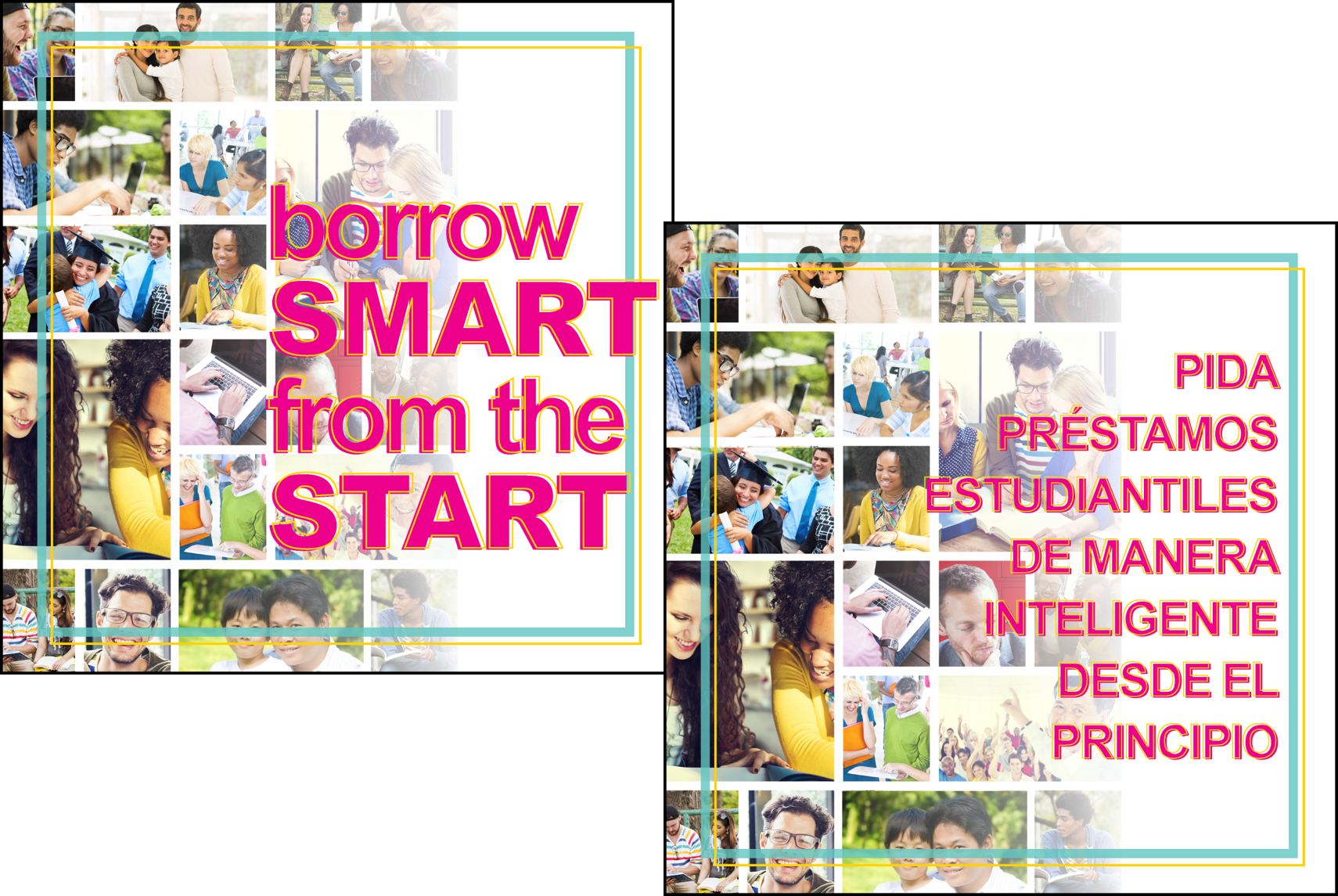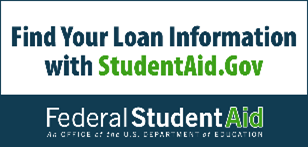What are my loan options?
When you complete a FAFSA (Free Application for Federal Student Aid) to apply for federal and state financial assistance for college, you might be offered student loans as part of your school’s financial aid offer. A student loan is like any other type of loan-it’s money you borrow that must be paid back with interest, whether you earn your degree or withdraw before graduation. If your loan isn’t repaid, you could damage your credit score and face wage garnishment.
Types of Federal Loans
A Direct Subsidized Loan is a type of federal student loan available to eligible undergraduate students who have demonstrated financial need. The U.S. Department of Education pays the interest on these loans while the borrower is in school at least half-time (typically six hours), during the grace period (usually six months after leaving school), and during deferment periods (periods when loan payments are postponed.) For more information on the Direct Subsidized Loan program, visit StudentAid.gov.
A Direct Unsubsidized Loan is a type of federal student loan that is not based on financial need and is available to both undergraduate and graduate students. Unlike a Direct Subsidized Loan, interest accrues on an unsubsidized loan from the time it’s disbursed until it’s paid in full. For more information on the Direct Unsubsidized Loan program, visit StudentAid.gov.
A Direct PLUS Loan is a federal student loan offered by the U.S. Department of Education to graduate or professional students and parents of dependent undergraduate students. It helps cover educational expenses not already met by other financial aid. There are two types: Parent PLUS Loans for parents* and Grad PLUS Loans for graduate/professional students.** Federal PLUS loans are based on the borrower's credit, so parent and student borrowers must pass a credit check in order to qualify. For more information on the Direct PLUS Loan program, visit StudentAid.gov.
Important to note:
Parents who take out a PLUS loan for their students’ education cannot transfer this loan to their student once they leave school.
**The Grad PLUS Loan program will end after the 2025-26 academic year.
 Download OKMM’s Borrow Smart from the Start booklet for more information about making better-informed borrowing decisions. Borrow Smart is also available in Spanish.
Download OKMM’s Borrow Smart from the Start booklet for more information about making better-informed borrowing decisions. Borrow Smart is also available in Spanish.
The Application Process
To receive federal loans, all students must complete the FAFSA (Free Application for Federal Student Aid).
Your FAFSA results will determine your eligibility for a loan and if you need money to help cover the gap between the cost of attendance and your other financial aid. Please be smart! Only apply for the amount of money you need to cover school expenses.
Your college financial aid office will notify you regarding the student loan application process. Please contact them with any questions you may have about student loan amounts and interest rates.
Private vs. Federal Loans
Private loans are another option for helping with college expenses. Speak with your financial aid office if you have questions. Most student loan officials encourage students to exhaust all federal loan options before considering private loans which often come with higher interest rates and less flexible repayment terms, but do your homework. Some private lenders may offer comparable benefits.
Where can I find my loan information?
StudentAid.gov is the U.S. Department of Education’s comprehensive database for all federal student aid information. This is a one-stop-shop for all of your federal student loan information.
At StudentAid.gov, you can find:
- Your student loan amounts and balances.
- Your loan servicer(s) and their contact information.
- Your grace period information.
- Your interest rates.
To access StudentAid.gov:
- Go to StudentAid.gov and select “Log In." Use your StudentAid.gov username and password to access your information.
- Navigate to the “My Aid” section, often found under your name or in the dashboard.
- For each loan you’ve taken out, you can view details such as loan type, current balance, loan status, and the name of your loan servicer.
- You can also view information about other federal financial aid you’ve received, such as Pell Grants.
- If you have questions about your student loan, you can contact your loan servicer directly using the information provided in the “My Aid” section.
StudentAid.gov can be a valuable tool for you in keeping track of your student loan information. Checking StudentAid.gov and communicating with your servicer will give you the information you need to stay on track for your student loan repayment.




